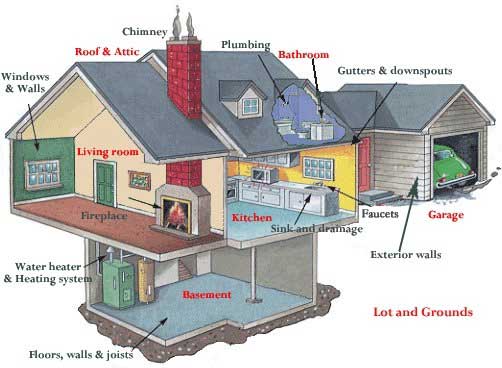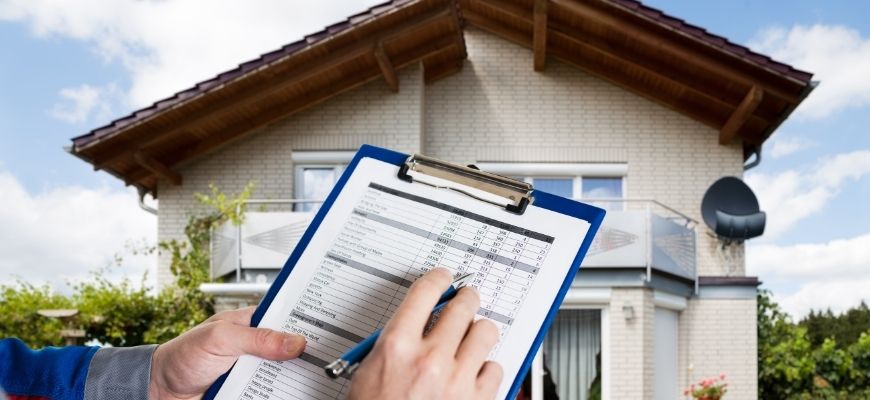Phoenix property inspections ensuring safety, regulations, and structural integrity
Phoenix property inspections ensuring safety, regulations, and structural integrity
Blog Article
What Is Consisted of in a Comprehensive Property Assessment Process?
A comprehensive building assessment process is crucial for protecting financial investments and making certain safety. It includes a meticulous evaluation of architectural stability, electrical systems, plumbing, and A/c systems, amongst other vital components. What, after that, are the most crucial facets that can make or damage a property assessment?
Overview of Building Evaluation

The inspection encompasses several vital areas, including the outside and indoor elements, systems such as plumbing and electrical, and any noticeable architectural elements (Phoenix property inspections). During the procedure, the inspector documents the problem of these components, trying to find indicators of wear, damages, or prospective hazards
An extensive residential or commercial property inspection not just aids prospective customers make educated decisions but likewise assists present owners in recognizing essential fixings or upkeep tasks. By providing a thorough report of findings, the evaluation makes it possible for stakeholders to prioritize issues that might call for immediate focus or can influence future financial investment.
Additionally, a reliable examination process adheres to established market requirements and standards, making certain a reliable and consistent evaluation. Overall, the building assessment procedure is a necessary tool in property transactions, advertising transparency and securing both purchaser and seller passions.
Architectural Examination

Throughout the inspection, experts analyze different parts, consisting of the structure, framing, wall surfaces, and roof covering systems. They look for signs of shifting or resolving, such as fractures in wall surfaces or unequal floors, which can symbolize underlying concerns. The examination likewise entails taking a look at the top quality of building and construction products and techniques utilized, ensuring conformity with building ordinance and criteria.
Additionally, examiners may look for indications of moisture breach, which can lead to wood rot and mold and mildew, further endangering structural honesty. They also assess load-bearing aspects to ensure they can effectively sustain the weight of the structure and its contents.
Inevitably, a detailed structural evaluation provides important insights for prospective customers and home owners, enabling them to make enlightened decisions relating to residential or commercial property financial investments and required maintenance. By recognizing structural problems early, owners can deal with issues proactively, protecting the long-lasting value and safety of the building.
Electrical System Analysis
A reliable electric system evaluation is important in the building assessment procedure, as it examines the security, performance, and compliance of a structure's electrical facilities - Home inspections. This assessment generally includes a complete assessment of the primary electrical panel, circuit breakers, and circuitry systems. Examiners search for indicators of wear, corrosion, or damage that might compromise content safety and security
The assessment includes testing for adequate grounding and bonding, making certain that the electric system is correctly attached to stop electric shock or fire threats. Assessors additionally assess the capacity of the electric system to deal with the present lots, determining any possible overloading concerns that could bring about blackouts or failures.
On top of that, the assessment checks for the existence of GFCI (Ground Fault Circuit Interrupter) and AFCI (Arc Mistake Circuit Interrupter) devices in appropriate places, which are important for securing versus electrical shocks and protecting against fires. Conformity with neighborhood structure codes and policies is likewise validated to make certain that any type of installations or modifications meet safety criteria.

Pipes and Cooling And Heating Checks
Adhering to the electric system analysis, the pipes and cooling and heating checks are integral components of the residential property examination process. These analyses make sure that the important systems of the residential or commercial property are working effectively and safely, consequently protecting the financial investment and wellness of the owners.
Throughout pipes inspections, specialists examine the condition of pipes, fixtures, and drainage systems. They check for leaks, corrosion, and any type of indicators of water damages that might show larger concerns. The effectiveness of water heating units is additionally examined to ensure they fulfill current requirements and supply adequate hot water supply.
Inspectors will examine the functional effectiveness of these systems, guaranteeing that they preserve a comfortable indoor setting. In addition, the inspector will look for any indications of wear or possible safety and security risks, such as carbon monoxide leaks in heating systems.
Outside and Inside Assessments
Outside and interior inspections are vital aspects of the home inspection process, giving a thorough overview of a home's problem. The external examination includes reviewing architectural components such as the roofing, siding, foundation, and windows.
The interior examination focuses on the problem of living areas, consisting of wall surfaces, flooring, and ceilings. Assessors check out the performance of doors, home appliances, and windows, while also inspecting for indications of dampness or structural concerns. Electric systems, plumbing fixtures, and HVAC units are looked at to guarantee they remain in functioning order, certified with building ordinance, and devoid of safety risks.
Both assessments culminate in an in-depth record you could look here that highlights essential findings and referrals for repair work or additional analyses. This twin approach guarantees that possible buyers or owners are totally educated concerning the property's staminas and weaknesses, enabling them to make knowledgeable choices.
Verdict
Finally, a thorough home examination procedure includes a considerable evaluation of architectural stability, electric systems, plumbing, and HVAC devices, along with in-depth exterior and indoor examinations - Home inspections. By systematically click for more info analyzing each crucial element, potential safety and security dangers and compliance with market criteria and neighborhood structure codes can be identified. The resultant in-depth report acts as an essential resource, encouraging property owners and customers to make enlightened choices pertaining to residential or commercial property investments and upkeep, inevitably improving safety and value
A thorough building examination procedure is essential for securing financial investments and making certain security.Throughout the assessment, specialists examine numerous parts, consisting of the structure, framing, walls, and roof covering systems.An efficient electric system evaluation is essential in the building inspection procedure, as it evaluates the safety, functionality, and compliance of a building's electric facilities.Outside and indoor evaluations are vital elements of the residential or commercial property assessment procedure, supplying a thorough overview of a residential property's condition.In final thought, a comprehensive property evaluation process includes a comprehensive analysis of architectural honesty, electrical systems, plumbing, and A/c systems, together with thorough exterior and indoor assessments.
Report this page